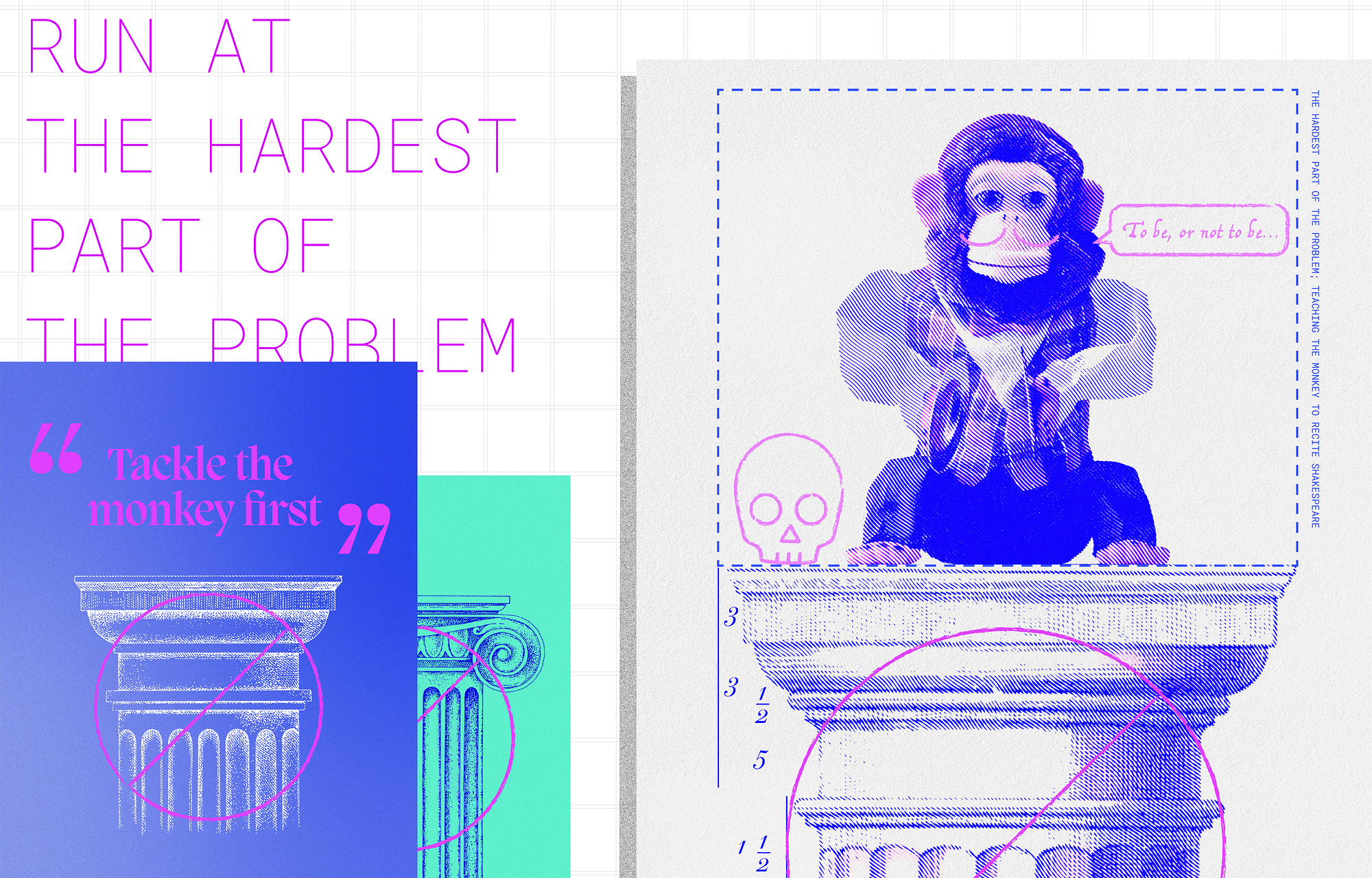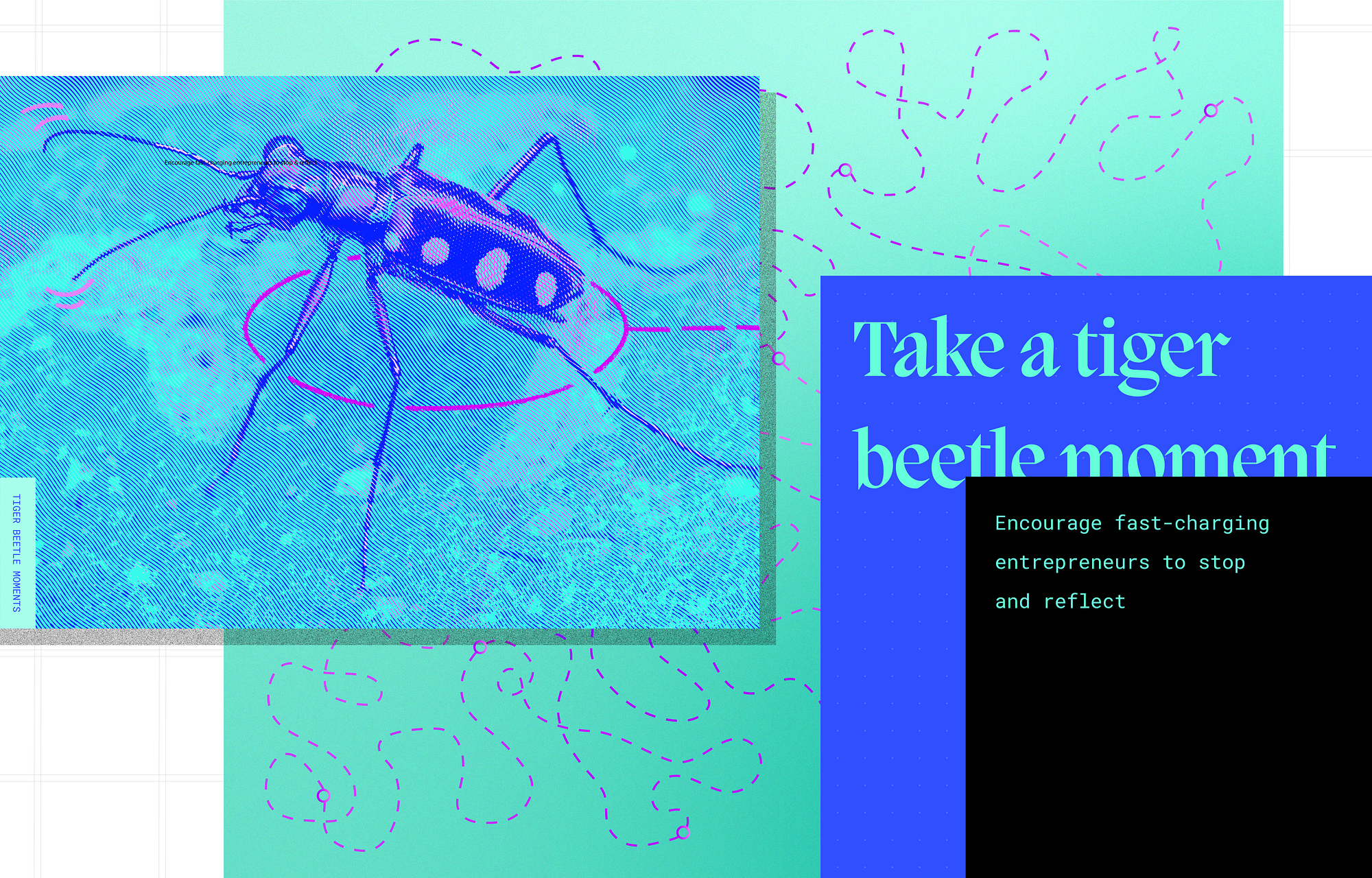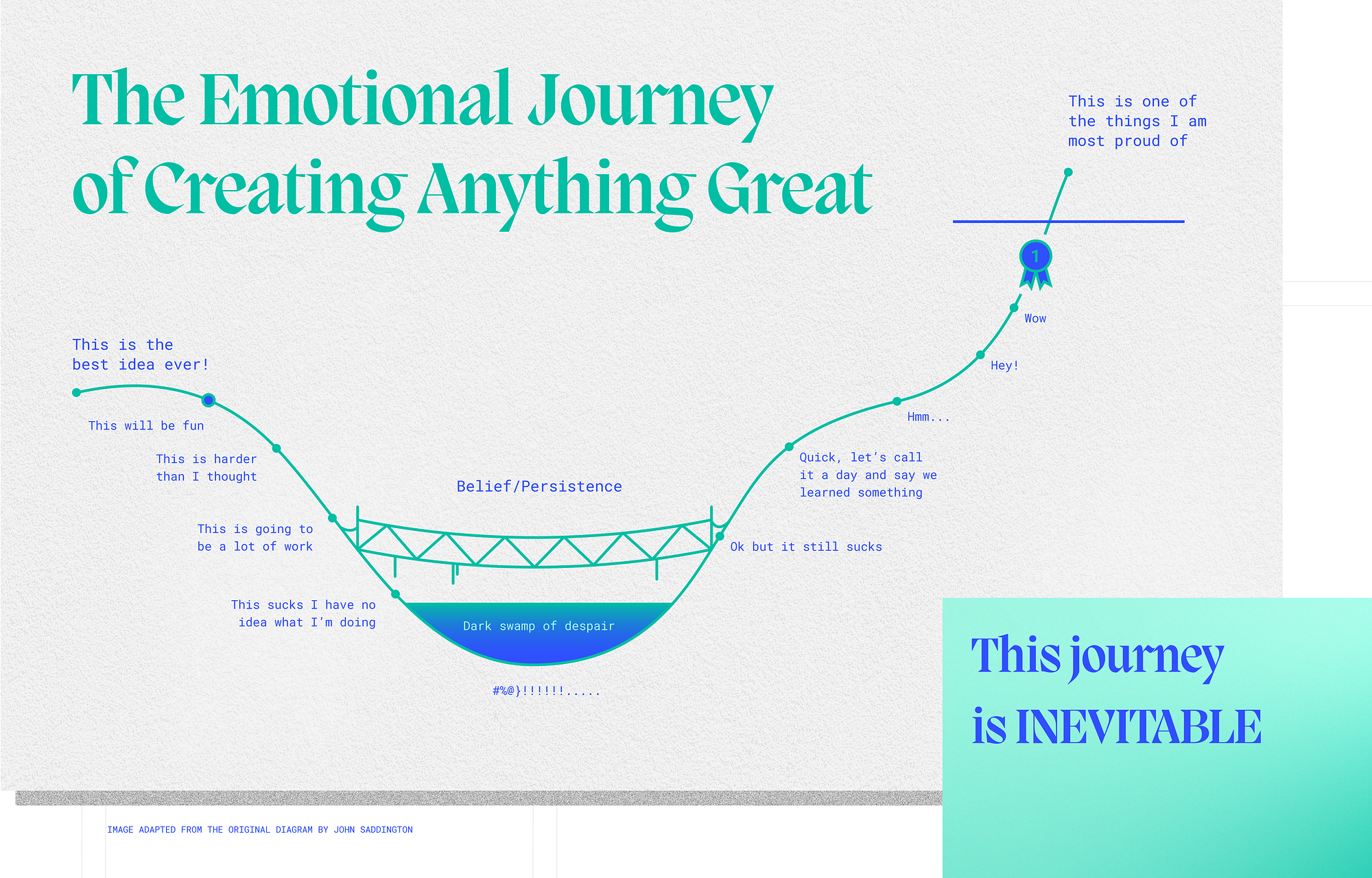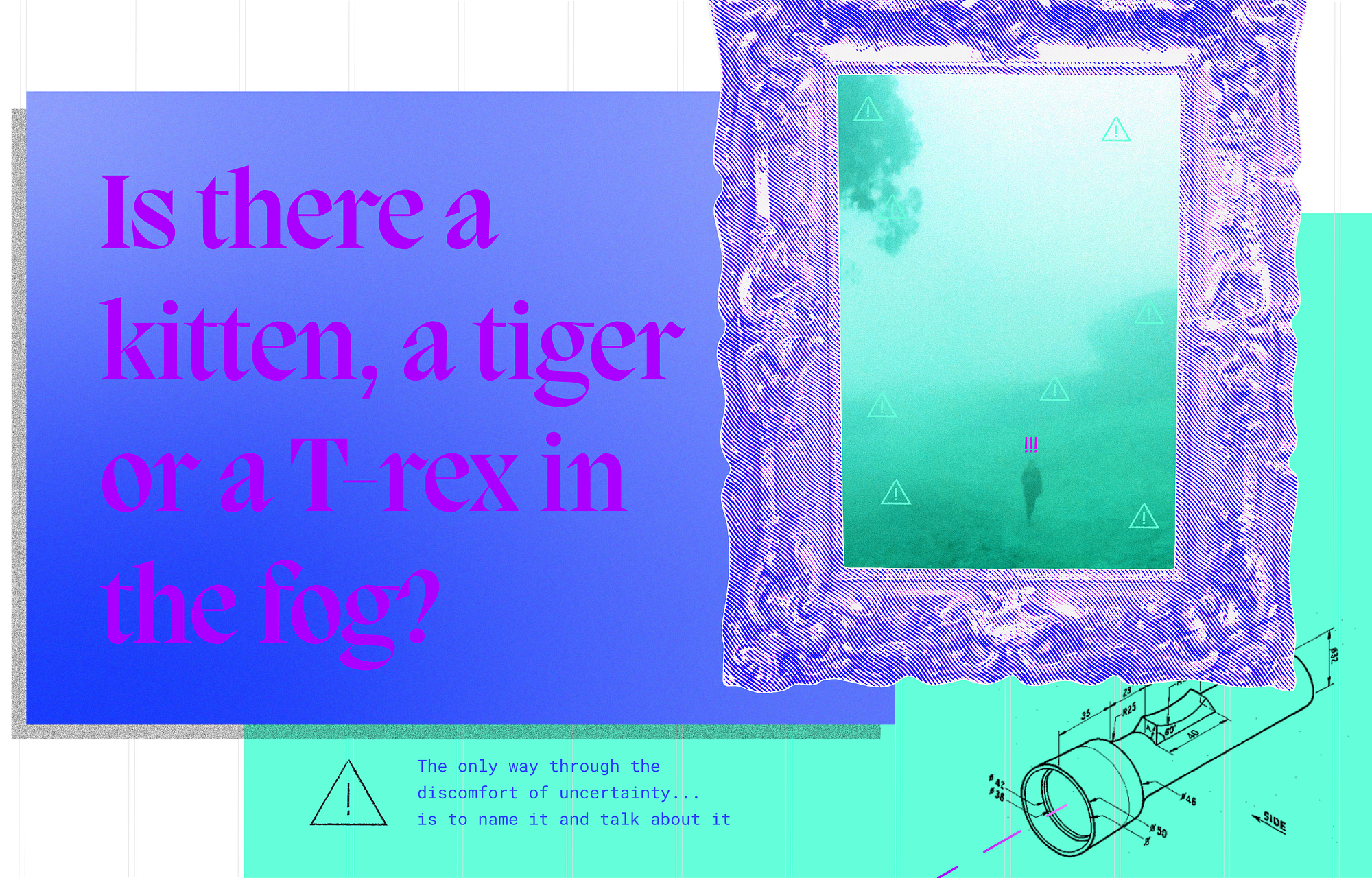The Monkey, the Tiger Beetle and the Language of Innovation
What we’ve learned from 10 years of moonshot taking about choosing your words wisely — and the many benefits of doing so
Typical corporate jargon isn’t just irritating for an innovation lab — it’s counterproductive. When people bandy about management-speak such as “taking a holistic approach” or “unlocking synergies”, the blandness doesn’t inspire anyone, and the vagueness doesn’t bring clarity. That’s why, over the years, we’ve found ourselves creating our own vocabulary.
It starts at the front door. As “X, the moonshot factory,” we’re offering an invitation to the still-unknown, Willy Wonka’s world of pure imagination, and the audacity of the Apollo 11 mission. We’re also expressing our desire to systematize innovation and build an assembly line for groundbreaking ideas.
But this is about more than a playful name. Over the last 10 years, we’ve learned that words and phrases play an incredibly important role in our culture — from encouraging people to think differently about their day-to-day work to helping them cope with the grief of project failure. Chosen carefully, words don’t just describe innovation; they enable it.
Language that calls attention to itself can punch through corporate conditioning
A few years ago, I saw a pattern across a team of writers I worked with: they were spending a lot of time and energy on really good first drafts of their work. In my mind, a v1 is a rough mockup to play with possible directions and prompt debate — the linguistic equivalent of popsicle sticks, cardboard, and duct tape. But I could sense them worrying: Can I really give a rough draft to someone evaluating whether I’m good at my job or not? Shouldn’t I put my best effort into everything?
I couldn’t seem to convince them that I was genuinely ok working with a super rough first draft — i.e., that I’d harbor no hidden judgment about their intelligence, commitment, or excellence at their craft.
So I came up with a new word. “Just give me a v0.crap.” (Pronounced “version zero dot crap”.)
Cue slightly aghast looks: She’s telling us to produce “crap!” That got their attention; language is often powerful because it calls attention to itself. And it was effective: we started sharing drafts with each other earlier and more often, happily testing our ideas before we committed lots of time to them.
v.0.crap works because it’s attuned to the psychology of the situation. It’s punching through our innate desire not to “look bad”, plus years of corporate conditioning that tells us not to share less-than-polished work. It’s easier for people used to delivering exceptional work to feel they’ve exceeded the goal of “crap”; they can sit comfortably in “good enough for the current purpose.” It also establishes an agreement, even trust, between the parties engaging with the work. A team member can use it to tell collaborators what kind of input they’re looking for, and people in positions of power can use it to clarify their expectations.

Innovation is inherently messy, and requires people to hold uncomfortable tensions and to act in counterintuitive ways. Colorful language — like “tackle the monkey first” — acknowledges these challenges, and makes them easier to navigate.
Acknowledge uncomfortable tensions with colorful metaphors
We’re trying to make the inherently messy process of innovation as efficient as possible, so we can move our resources to the most promising ideas. So we ask Xers to be “passionately dispassionate” — a phrase that tells them we’re asking them to live in the tension between pursuing their ideas with the conviction they’re right and stepping back with intellectual honesty to assess what’s not working out.
It’s unnatural and uncomfortable to hold this tension, particularly over the 5 or 10 years it takes to bring most X projects to life, so we have to send strong cultural signals that make it easier for Xers to be this way. You’ll find us using a variety of colorful and memorable metaphors to do this, some unique, and others more commonly used. For example, we talk about the “headwinds and tailwinds” a project faces, to acknowledge the changeability of factors affecting a project’s viability.
Astro Teller coined the phrase “tackle the monkey first” — as in, if you’re trying to teach a monkey to stand on a pedestal reciting Shakespeare, what should you spend your time and money on first? Most companies end up wasting resources on pedestals because it feels great to make progress and have something to show your boss. But pedestal-building doesn’t teach you a thing about the riskiest, most critical problem: getting the monkey to recite Hamlet.
Everyone shies away from working on the hard stuff first, yet it’s the only way to learn whether you should keep going on that idea or move on to something better. Thanks to Astro’s urging to “find your monkey,” teams at X often show up for reviews with their biggest risk labeled with a monkey icon. We want to see the majority of a team’s resources focused on this monkey, and if they can’t make progress, that’s a signal they should end their project and move on to something different.

Tiger beetles run so fast their brains literally can’t keep up with their bodies — and from our observation of entrepreneurs in their natural habitat, we’ve noticed this behavior may not be limited to tiger beetles…
Obi Felten saw that her teams of fast-charging, impatient entrepreneurs working on early stage X projects needed to be encouraged to stop and reflect once in a while on what they’d learned. She knew that taking the time to pause and assess would make them better at choosing the next leg of their journey, but to them, “slowing down” felt unnatural, even counter-cultural. So her team coined the term “tiger beetle moments.” Tiger beetles rush across the ground so fast that their brain and vision systems can’t keep up, so they have to stop and literally catch up with themselves. Framed this way, even the most aggressive entrepreneur can feel that it’s prudent, even necessary, to slow down and make time for reflection.
Name the discomfort of the innovation process or you’ll get stuck in it
Most companies shy away from talking about feelings and failure. We do the opposite: we’ve developed a lexicon that makes it easier for us to tackle these head on, together, because we know the innovation process is emotionally brutal.

Image adapted from The Emotional Journey of Creating Anything Great (credit: John Saddington, https://john.do)
When a project ends, we’re blunt with our language: we’ve “killed” it. Our language is deliberately direct. We want to acknowledge that ending work that’s been your sole passion and purpose for weeks, months, and even years feels like a death. We need to communicate the finality of the decision AND we need to honor the emotions, including grief, that come along with it, so we can get through it and get going on our next great idea.
We even have rituals that treat this like death. This past summer, to comfort some groups whose projects recently ended, several Xers who’d experienced this themselves in the past made a video in which they talked openly about their rage and sadness, as well as their ultimate emotional recovery. Some of us have created and shared “failure resumes” to illustrate how failure is not only universal but also leads to growth and learning, and we’ve held “pre-mortems” to identify and defuse a team’s worries about how an upcoming launch might fail.
When we’ve poured our hearts into something that’s not working out, it’s futile to ignore or repress what we’re feeling. We have to name that discomfort so individuals can 1) realize they’re not alone and everyone around them is sympathetic to the tough time they’re having; 2) talk about how hard it is to be feeling sadness, anger, self-doubt, or any of a number of common reactions; 3) reach out to others who’ve been there before to find comfort and advice. As Astro Teller often says, this is all necessary to create the psychological safety that’s necessary for making throwing ourselves into the unknown again and again.
Trigger inner reserves of self-belief and bravery with adventurous language
The human brain hates uncertainty, yet, like failure, it’s unavoidable for creators and innovators — so we have to learn to operate and thrive in this state. We’ve found that language can shift our perspective on an undefined situation, by moving our sense of ourselves from unsteady and nerve-wracked to adventurous and empowered.

People are hardwired to try and avoid uncertainty — so planning for an ambiguous future can be stressful and scary to navigate. Acknowledging “the fog” to help people prepare emotionally, and using empowering language to help them navigate it, can help teams work through these challenges.
Last year I noticed my team getting stressed about pieces of work that were still far out on the horizon and not very defined. As I asked why this work that was “still in the fog” was so stressful, one of them said, “I just want to know whether there’s a kitten, a tiger, or a tyrannosaurus in the fog so I can plan practically and emotionally.” We all know that moonshot-taking is unpredictable, and on the best days we have indeed caught a dinosaur by the tail. But it can still be disconcerting, especially if our hands are already full.
Now our team has a habit of talking about possible upcoming work as “in the fog,” and we estimate when or whether it’s likely to get clearer; just acknowledging that this can be unsettling is helpful. Obi Felten tells teams who are just starting their moonshot projects to think about ascending a foggy mountain. She prepares them emotionally by telling them that when the fog breaks, they might be close to the summit, still facing a long trek ahead, or even confronting a sheer and insurmountable wall.
Many of us proudly call ourselves “chaos pilots” — people who love operating amidst uncertainty, can create structure within chaos, and make things happen. I’ve also talked to new team members about “the jungle and alligators” they’ll find as they work — because hacking a metaphorical path past unseen threats toward an unclear destination is what entrepreneurs do. These analogies help me as a manager say more easily, “It’s crazy hard to do this work so don’t be surprised if you feel like you’re flailing.” The playful language destigmatizes the fear of encountering problems or asking for help and helps us feel more in control of a fundamentally uncontrollable environment.
I also encourage my team to tell me about “icebergs” — work or obstacles that are often invisible and under-appreciated — which has made it easier to flag something bothering them. X’s culture guide is called The Gimbal — a device on an aircraft or boat that keeps a surface stable. Our tools for encouraging individual growth are called the Altimeter and the Fuel Gauge. All these small linguistic signals add up and ease the difficult and emotional journey of working on problems so hard and technologies so new that the final answer is well over the horizon.
How you can put language to work for you
It might be surprising to you that an organization known for cutting edge technology cares so much about something as soft and abstract as language and how it makes people feel — and that’s exactly why we’re sharing these tips. Everyone has the potential to be brave, audacious, and radically creative, but we often put ceilings on ourselves with mindsets or habits that trap us on conventional trails of thought. A powerful vocabulary can help us resist forces that limit our thinking without us even realizing it.
Language is already shaping your team’s culture, whether you realize it or not — it emerges spontaneously. Listen closely for the words and phrases that cause your teams to light up — or shut down. Ask yourself: is what you’re hearing encouraging or discouraging the behaviors that make your team successful?
If you want to read more about how language can help your leadership, Made to Stick, by Chip and Dan Heath, remains my all-time favorite for finding “sticky” language that changes minds. I’d also recommend background reading in psychology, both individual and organizational, like Daniel Kahneman’s Thinking Fast and Slow and Amy Edmondson’s The Fearless Organization.
As Mark Twain so beautifully put it, “The difference between the almost right word and the right word is really a large matter. ’tis the difference between the lightning bug and the lightning.” Let me know in the comments what language you’ve found or invented to suit your unique team culture.
If you like this blog, head to X’s website and sign up for our about-to-launch newsletter. We’ll share what X has learned from 10 years of moonshot-taking and our methods for innovating and staying optimistic, brave and determined while the world feels so unmoored — so everyone can contribute to building a 10x better future. We’ll also include the news from our latest moonshots, emerging investigations, current projects, and more. We hope you’ll check it out!